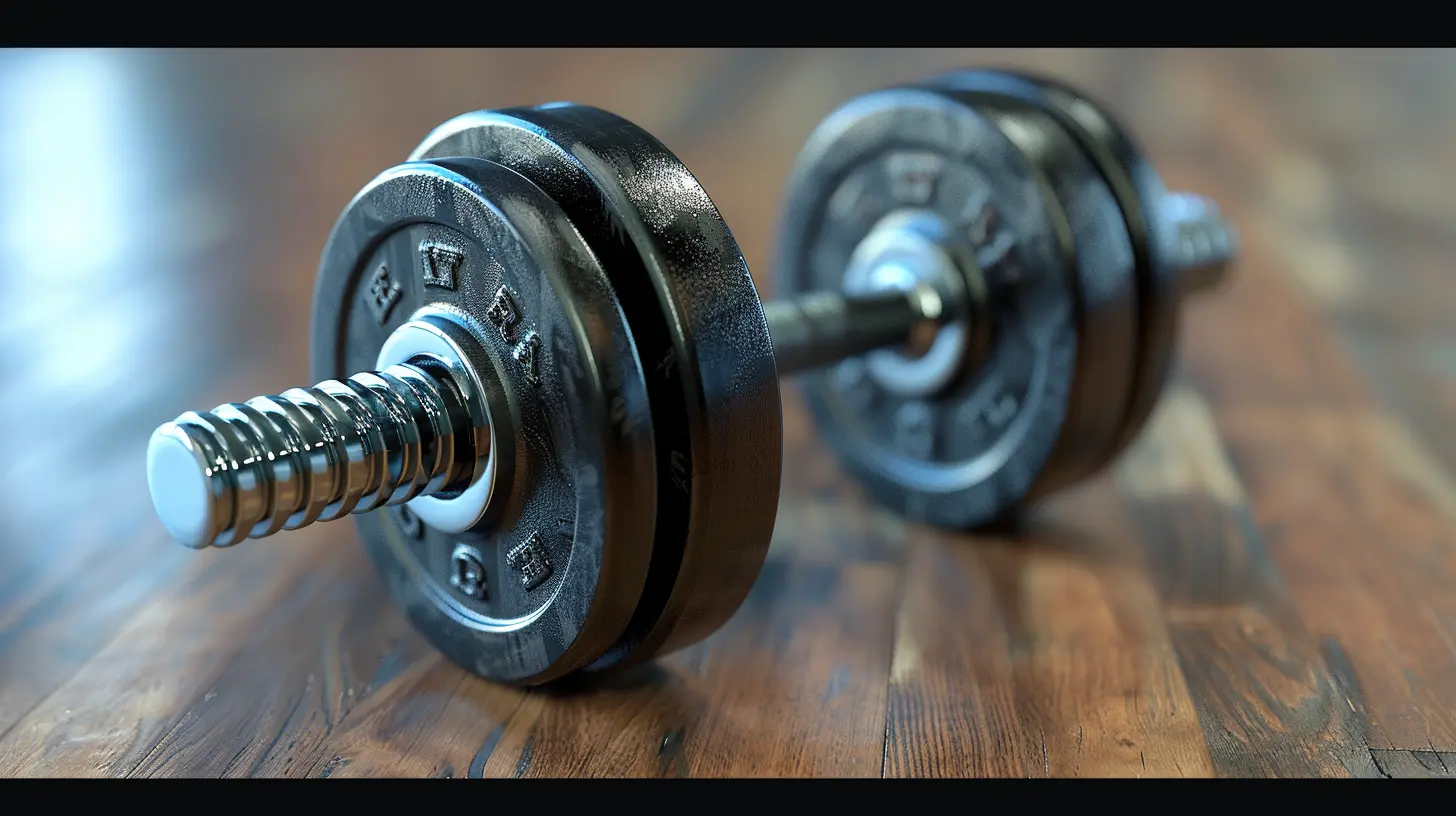Beginner’s Guide to Weightlifting: Building Strength Safely
7 October 2025
So, you’re thinking about starting weightlifting? Awesome! Whether you're looking to build muscle, burn fat, boost confidence, or just feel stronger—congrats on taking the first step. But let’s be honest, walking into a gym for the first time can feel like stepping into a foreign country. So. Many. Machines. So many people who seem to know exactly what they’re doing.
No worries—this guide is here to clear the fog. We’ll break it all down simply, from how to lift safely to what mistakes to avoid. By the end, you'll have a clear roadmap for building strength the smart way—not the painful way.
Why Start Weightlifting in the First Place?
If you’ve been relying solely on cardio machines or yoga mats, adding strength training can change the game. Here's why:- Increased metabolism: More muscle = more calories burned at rest.
- Improved bone density: Especially important as you age.
- More strength for everyday life: Carrying groceries, lifting your kids, or even moving furniture becomes easier.
- Better posture and confidence: You’ll stand taller—and feel better doing it.
Basically, weightlifting isn’t just for bodybuilders. It’s for anyone who wants to live a stronger, healthier life.
Getting Started: What You Actually Need
First things first, don't get overwhelmed by all the gear and supplements out there. Here’s what really matters as a beginner:1. The Right Mindset
Before we talk dumbbells, let’s talk mindset. Weightlifting isn’t about chasing quick results—it’s about consistency. It’s about showing up, even when you're sore or tired. Think of strength-building like planting a tree. It takes time, but once it grows? It’s solid.2. A Simple Starter Program
Forget complicated splits for now. As a beginner, full-body workouts 3 times a week are your best friend. Focus on compound movements like:- Squats
- Deadlifts
- Push-ups (or bench press)
- Overhead presses
- Rows
These exercises hit multiple muscles at once. More bang for your buck.
3. Minimal Equipment
You honestly don't need a fancy gym membership to get strong. A pair of adjustable dumbbells, a resistance band, and a bench or stability ball can get you started at home.
How to Lift Properly (And Safely!)
Weightlifting isn’t just about picking things up and putting them down. Doing it wrong can lead to injuries—and trust me, nothing slows down progress like a tweaked back. Here’s how to keep it safe:Warm Up Like You Mean It
Don’t skip it. A good warm-up preps your muscles and joints for the work ahead. Think dynamic stretches, bodyweight squats, arm circles, light jogging—whatever gets your body moving and blood flowing.Master Your Form First
Form first, weight second. It’s tempting to go heavy fast, but your ego can’t lift for you. Poor form puts stress where it doesn’t belong (hello, back pain). Start light and add weight only when you can maintain perfect technique.Start with Bodyweight
If you can’t do a proper squat or push-up yet, start there. Your own body is the best teacher. Once those get easier, then start adding weights.Don’t Skip Rest Days
Your muscles grow when you rest, not while you're lifting. Schedule at least one full rest day between sessions, especially early on.
Structure of a Beginner Workout
Let’s get into the bones of a good weightlifting session:1. Warm-Up (5-10 min)
Light cardio + dynamic stretches (think jumping jacks, hip circles, leg swings)2. Main Lift (Big, Compound Movement)
Pick one: squats, deadlifts, bench press, or overhead press. Start with 3 sets of 5-8 reps.3. Accessory Work
These focus on smaller muscle groups or weaknesses.- Dumbbell rows (back)
- Plank holds (core)
- Lunges (legs and balance)
Do 2-3 exercises, 2-3 sets of 10-12 reps.
4. Cool Down
Stretch the muscles you worked—quads, hamstrings, shoulders, etc. Foam rolling helps too.Common Beginner Mistakes (and How to Avoid Them)
Hey, we’ve all made a few rookie errors. But knowing what to look out for can save you time and frustration.❌ Lifting Too Heavy Too Soon
We get it. You want to “go beast mode.” But ego lifting usually leads to injury, not gains. Start light, focus on technique, and progress in small steps.❌ Skipping Legs
Nobody wants “chicken legs.” Even if upper body workouts are more fun, don’t neglect squats and lunges. Strong legs = a strong foundation.❌ Not Eating Enough
Lifting weights without fueling up is like running a car on empty. Your body needs protein for muscle repair and carbs for energy. Don’t be afraid of food!❌ Comparing Yourself to Others
You’ll see people lifting crazy weight. Who cares? Everyone was a beginner once. Focus on your progress and celebrate every win, no matter how small.Progression: When and How to Go Heavier
Okay, so you’ve been lifting for a few weeks. Things are starting to feel easier. That’s your cue to progress.But how much weight should you add?
Try the 2-for-2 Rule:
If you can do two extra reps on your last set for two workouts in a row? Time to bump up the weight by 5-10%. Simple and safe.Also, track your weights. A notebook or an app can help you spot trends, stay motivated, and avoid plateaus.
What About Nutrition?
You don’t need to count every macro, but here are three basic rules:- Protein is your BFF: Aim for at least 0.7–1g per pound of body weight.
- Carbs help fuel your workouts: Don’t skip them.
- Healthy fats keep you feeling full: Think nuts, avocados, olive oil.
And drink water. Then drink some more. Hydration keeps everything moving smoothly, especially recovery.
Recovery: The Secret Sauce
Lifting breaks down muscle fibers. Recovery is when they rebuild—stronger.Key Recovery Tips:
- Sleep 7–9 hours per night- Take rest days seriously
- Stretch regularly
- Massage or foam roll sore muscles
Treat recovery like part of your training—not an afterthought.
Supplements: Do You Need Them?
Short answer? Not really. Food should be your primary fuel source. That said, a couple of supplements can help:- Whey protein: Convenient for hitting your protein targets.
- Creatine monohydrate: One of the most studied (and safe) performance boosters.
- Fish oil: May help reduce inflammation.
Talk to your doctor or a registered dietitian before adding anything new.
How Long Until You See Results?
This is the million-dollar question, right?Here’s the real talk: noticeable strength gains can kick in within 4–6 weeks. Visible muscle changes? That might take 8–12 weeks, depending on diet, consistency, and genetics.
But don’t get discouraged. Every session is making you stronger—even if the mirror doesn’t show it yet.
Tips to Stay Motivated
You started strong. But how do you keep going?- Set mini-goals: Maybe it's doing your first push-up with good form or deadlifting your body weight.
- Keep a workout journal
- Celebrate small wins
- Train with a friend
- Change things up every 6–8 weeks to keep things fun
And remember, there will be tough days. That’s normal. Just show up. Progress is built on repetition.
Final Thoughts: You’ve Got This
Starting weightlifting is one of the best self-care decisions you can make. Yeah, it can be intimidating at first. But every rep, every drop of sweat, every sore muscle—it’s all building a stronger you.Don’t wait for the “perfect” time. There’s no such thing. Start messy. Start small. But just START.
And hey, next time you walk into the gym? You won’t feel like a lost tourist anymore—you’ll belong.
all images in this post were generated using AI tools
Category:
FitnessAuthor:

Everett Davis
Discussion
rate this article
1 comments
Savannah Green
This comprehensive guide offers essential tips for beginners to embark on their weightlifting journey safely. It emphasizes proper form, gradual progression, and recovery protocols, ensuring a solid foundation for building strength and preventing injuries. A must-read for anyone new to weightlifting!
October 13, 2025 at 4:35 AM


